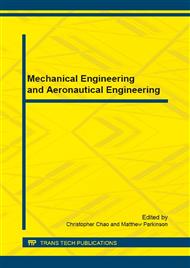p.9
p.15
p.21
p.29
p.35
p.41
p.46
p.55
p.61
Modeling Analysis of Contactless Power Transfer System for Rotary Ultrasonic Machining
Abstract:
In rotary ultrasonic machining (RUM), the traditional power transfer method was achieved by slip ring that cannot cope with high-speed rotary of the tool, which limits the machine potential of RUM. Based on the principle of electromagnetic mutual inductance and the technology of loosely coupled inductively power transfer (LCIPT), a contactless power transfer system (rotary transformer) is built for RUM to achieve its power transfer goal. Resonant Compensation technology is used to enhance the efficiency of the rotary transformer. And the performance of the rotary transformer is validated on Maxwell platform.
Info:
Periodical:
Pages:
35-40
Citation:
Online since:
March 2016
Authors:
Price:
Сopyright:
© 2016 Trans Tech Publications Ltd. All Rights Reserved
Share:
Citation:


